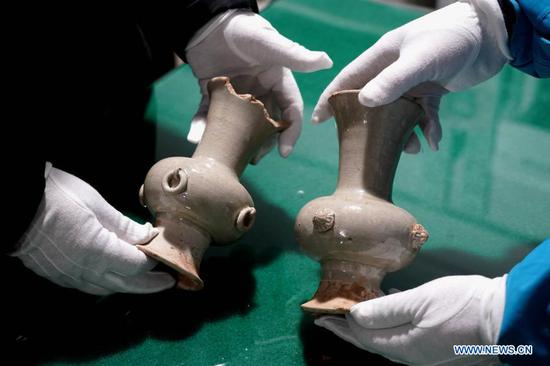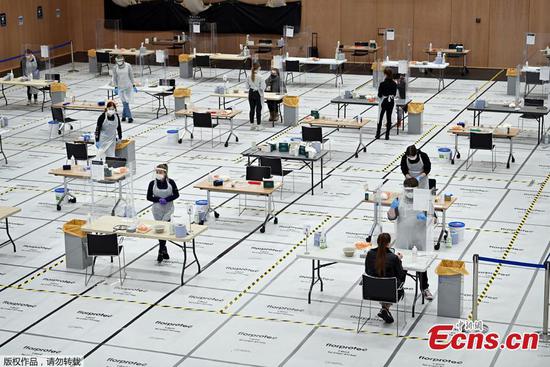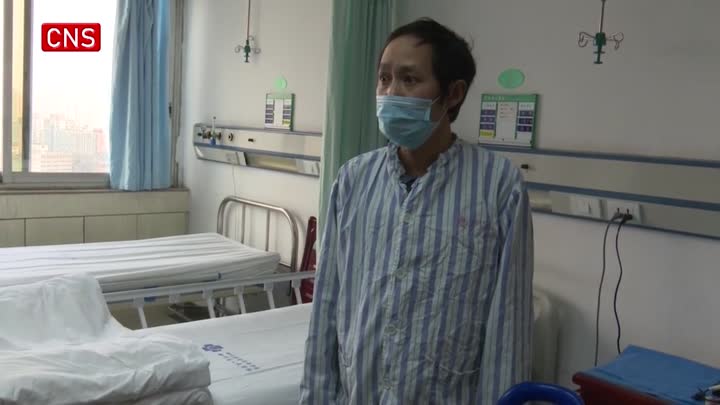Cause Analysis on the Declining Trend of Population Growth in Xinjiang in 2018
The birth rate and natural growth rate of Xinjiang population decreased from 15.88 ‰ and 11.40 ‰ in 2017 to 10.69 ‰ and 6.13 ‰ in 2018, respectively. Compared with 2017, the new-born population in 2018 decreased about 120,000. The main reasons are as follows.
Family planning policy is strictly practiced. According to the 2017 amendment of the Population and Family Planning Ordinance of Xinjiang Uyghur Autonomous Region, people of all ethnic groups in Xinjiang enjoy equal rights in family planning. Specifically, each registered urban couple is permitted to bear two children at most and each registered rural couple permitted to have three children at most. Any violation of the ordinance is subject to due penalty. In the meanwhile, special funds rewarding birth control and providing social security are appropriated by governments at county level and above for those who have already practiced the policy.Couples of ethnic minorities in Xinjiang rural areas who are willing to have only one or two children (adopted children included) in their lifetime, are eligible for applying for Certificate of Honor in Practicing Family Planning Policy. They could also receive a bonus of no less than 3000 RMB Yuan from the local government.In recent years, in order to enhance the quality of civic reproductive health, Xinjiang made constant efforts to improve services in birth control and reproductive health and spared no efforts in popularizing scientific knowledge in contraception and reproductive health. For example, there have been 9788 distribution sites so far in Xinjiang giving out condoms and other contraceptives materials free of charge. Seventeen types of contraceptives are offered annually for no charge; moreover, applications for smart phones are also developed to offer detailed information for sites providing contraceptives at prefecture, county and township levels, meeting individual needs for contraception and reproductive health. Safe, effective and appropriate contraceptive measures are available to couples of childbearing age, and fertile women accept tubal ligation and IUD operation spontaneously. In Hotan and other prefectures, the government follows the principle of combining people’s will with technical guidance, encouraging fertile women to choose internationally recognized tubal ligation and IUD operation which are slight in side effect, safe and effective. All the expenses of these operations are covered by the government.
The mindset on marriage and procreation has been shifted. In these years, young people in Xinjiang have already discarded the backward and outdated thoughts on mate selection and procreation. An increasing number of ethnic minority youths began to put more time and energy on personal development, thus postpone the time of first marriage. In 2015, there were 102 newlyweds in a township of Yengisar county, none of them were married at an early age. In fact,47 of them married late, a 23.9% increase over the previous year. In the meantime, deeply influenced by the conception of “the fewer and the better”, many married women of ethnic minorities in rural areas were able to go out finding jobs to earn more money, so the previous life cycle of “marriage-maternity-farming” has been broken and their status in family has been greatly enhanced, women have more chance than before to decide whether to have babies. With social development and progressing thoughts, the freedom of arranging one’s own marriage and the pursuit of happy marriage has become a commonplace. The rates of divorce and remarriage were stable with slight decline. According to official data, the numbers of registered divorced couples were 74979 in 2015, 51223 in 2017, and 47919 in 2018, with an annual decline of 14%; the numbers of remarried people in these years were 195008, 150628, and 115831, with an annual drop of 16%.
Religious extremism has been effectively curbed. In recent years, facing the tough challenges of severe and complicated anti-terrorism and eradicating extremism as well as people’s urgent need of cracking down on violent and terrorist crimes and ensuring the safety of life and property, Xinjiang government managed to liberate the minds of numerous people from the shackles of religious extremism, by addressing both symptoms and root causes and waging a war against extremism. The idea of civilized modern life has won popular support from the public. Those infected by religious extremism in the past were converted to enjoy the freedom to arrange their own marriage and accept legally registered marriage and contracted divorce rather than the previous religious ceremony of “chanting nikka to marry” and “chanting Talak to divorce”. They also abandoned the extremist thought of “Those who practice birth control and contraception are heretic” and embraced the idea of “Fewer and better birth brings lifelong happiness”, by which increased the awareness of lawfully obeying marital and obstetrical procedures of all ethnic groups. In the process of eradicating extremism, the minds of some women were emancipated, the scientific consciousness of gender equality and reproductive health has been promoted, making women not being reproduction machines any more. Women have been striving to become healthy, confident, independent, family-loving, patriotic, and modern in new era.
The Rationality of Population Change in Xinjiang
The trends of world population suggested that the more developed the economy and society is, the stronger is people’s senses of realization of self-value and fostering better children, so the fertility rate and natural population growth rate will decrease correspondingly. According to the canonical demographic transition theory, human population will change from “high mortality rate, high birth rate and low growth rate” to “low mortality rate, low birth rate and low growth rate” with the development of human society. Since mid 1960’s, the birth rate of some European countries has showed a continuous dip, the total fertility rate amounting to 1.6 and even lower between 1980 and 1985. In the twilight of the 20th century, the birth rate of Europe as a whole was ultra-low. The total fertility rate of China had dropped to a rather low level in early 1990s and kept dropping. In 2015, the rate was 1.5-1.6.
Compared with national level, the demographic change in Xinjiang is typically featured by relative hysteresis and structural differences. With continuous economic and social development, the living conditions of people of all ethnic groups have showed fundamental changes, especially in travelling, housing, education, medical conditions and employment; the quality of population is therefore substantially enhanced. The birth rate, mortality rate and natural growth rate of population in Xinjiang dropped from 22.55‰, 7.69‰ and 14.86‰ in 1978 to 10.69‰, 4.56‰ and 6.13‰ in 2018 respectively. Based on the four-stage hypothesis of the demographic transition theory, the population of Xinjiang has come to the fourth stage, i.e., the stage of low mortality rate, low birth rate and low growth rate. In 2018, both fertility rate and natural growth rate of ethnic minority population (the Uygur population in particular) in Xinjiang decreased significantly. All of these can be attributed to the strict implementation of the family planning policy, and the acceleration of relatively hysteretic transition of ethnic minority population as a result of rapid economic and social development in recent years.
With the further promotion of poverty alleviation, the living conditions of poverty-stricken areas in south Xinjiang are greatly improved, and the process of urbanization apparently accelerated with continuously increasing urban population. People of all ethnic groups are better educated with cultural qualities better raised. The idea of late marriage-childbearing and fewer-better births have gained increasing popularity and become a new fad in southern Xinjiang. In the meantime, secular and modern lifestyle advocated in southern Xinjiang has already achieved remarkable results. The affection of backward ideas began to recede significantly, leaving wider space for individuals to make decision with stronger autonomy in controlling maternity. With the old concept of childbearing fading markedly, young women enjoy more autonomy for their childbearing. A safe conclusion can be drawn that the transition of Uygur population is achieved more by their own choice and autonomy than the guidance of policies and external forces. The transition is not only a matter of population size, but also a subject involving the overall improvement of population quality, which is the result of voluntary choice of people of all ethnic minorities.
By Li Xiaoxia, special researcher of Xinjiang Development Research Center
(Source:Tianshannet)


















































